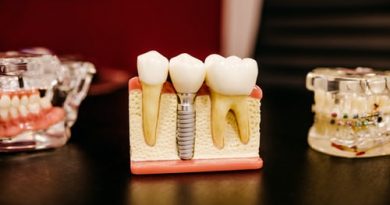The Many Negative Health Effects of Living a Sedentary Lifestyle
Being sedentary means that a person engages in little to no physical activity, and they spend the majority of their time sitting down or lying down. It’s important to note that “physical activity” doesn’t equate to “exercise” because the latter is defined as structured, intentional, and repetitive activity. However, a lack of exercise can also be considered sedentary, and being sedentary comes with a lot of health risks.
Post Content
Cancer
Studies have shown that a sedentary lifestyle can lead to an increased risk of developing cancer, specifically breast, colon, lung, and uterine cancers. There seems to be a link between poor circulation plus higher insulin levels and cancer development. Of course there are other factors that play a role in cancer development (such as family history), but regular exercise seems to decrease the risk for cancer by a significant amount.
Another factor that plays a role in cancer development and can also be found coupled with a sedentary lifestyle is poor eating habits. A healthy diet isn’t common in a sedentary lifestyle, and poor eating habits combined with inactivity increase the risk of cancer even more. To combat this risk, simply exercise more and eat healthier foods that help prevent cancer.
Diabetes
Because prolonged sitting and/or lying down is linked to higher insulin levels, a sedentary lifestyle puts you at a higher risk of becoming diabetic. Type 2 Diabetes is more common than Type 1, and it’s caused by high blood sugar levels— which results in higher insulin levels. Long periods of inactivity (including sitting for more than 30 minutes at a time) can result in metabolic syndrome, which increases the risk of developing Type 2 Diabetes. You can sell diabetic test strips.
High Cholesterol, Hypertension, and Heart Disease
Inactivity can also affect the body’s ability to process fats. The enzyme responsible for breaking down fat (lipoprotein lipase) drops significantly when sitting for long periods of time, resulting in high cholesterol. High cholesterol is linked to different types of heart disease, including carotid artery disease and peripheral arterial disease.
High blood pressure, or hypertension, can also develop from inactivity. Being less active increases your chances of gaining weight, stiffening of arteries, muscle atrophy, and vascular rarefaction, which all can increase the risk of high blood pressure. High blood pressure is associated with stroke, heart attacks, heart failure, and kidney failure.
Osteoporosis
Osteoporosis is also known as “brittle bone disease” where the bones become very weak and can fracture or break easily. At first, it may seem like preventing bone fractures or breaks can only be done by being inactive, but physical activity actually helps bone health. Our bones know how to positively respond to physical activity, by increasing its density and building more bone.
Again, physical activity coupled with a healthy diet is key to preventing all diseases associated with a sedentary lifestyle. Vitamin D and calcium, specifically, help promote optimal bone health when combined with regular exercise.
Pressure Ulcers
Also known as bedsores or pressure sores, pressure ulcers form on the skin when excessive pressure is being put on them. These sores form when blood supply is cut off from the skin after two hours and can become open wounds and become infected. They’re typically found on the back of the head, buttocks area, heels, shoulder blades, and the sides of the knees.
Pressure ulcers can occur on the bodies of extremely sedentary people, although they’re more often found on bedridden individuals, such as those who may be neglected in a nursing home. Still, it’s important to get up and move around to avoid having one form on the skin.
Stroke and Heart Attack
As mentioned earlier, inactivity affects the body’s ability to process fats. This causes fat buildup in the body, and this can result in fatty substances blocking arteries. Clogged arteries that are supposed to carry blood to the brain result in a stroke, while clogged arteries that are supposed to carry blood to the heart result in a heart attack. Physical activity (paired with a healthy diet) prevents your arteries from becoming clogged, allowing blood to flow like it’s supposed to.
The Bottom Line
Ultimately, no good can come from a sedentary lifestyle. Both physical activity and regular exercise are key to avoiding all of the complications that come with being inactive. To really reduce your risk of these complications, it’s also important to eat a healthy and balanced diet. Doing one without the other won’t necessarily help you avoid all of these complications, so it’s best to try and do both.




